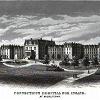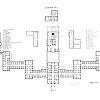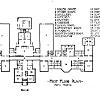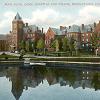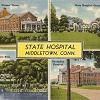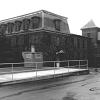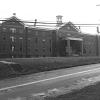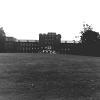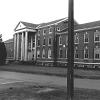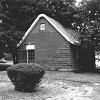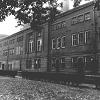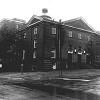Time Capsule |
|
A PHP Error was encountered
Severity: Notice
Message: Only variables should be passed by reference
Filename: pages/site.php
Line Number: 13

- Also Known As:Connecticut Hospital for the Insane
- Genre:Psychiatric Hospital
- Comments: 395
- Built:1866
- Opened:1874
- Age:159 years
- Closed:N/A
- Demo / Renovated:N/A
- Decaying for:N/A
- Last Known Status:Demolished (Weeks Hall only, CVH continues to operate)


Photo © 2006 Tom Kirsch, opacity.us
Connecticut Valley Hospital History
The state of Connecticut lagged behind in providing public institutional care in the nineteenth century, and it wasn't until the 1860s when the state sought to establish an asylum in Middletown; by then, 28 of the 33 states had already built hospitals for the insane. The Hartford Retreat was one of the few places to receive proper psychiatric care at the time, but it was a private institution, so the state's indigent insane population was sent to almshouses and prisons where they suffered in poor conditions. Finally in 1866 the construction of the state's first public asylum began, supervised by the newly appointed superintendent Dr. Shew. Under his recommendation, a large singular building was erected following Dr. Thomas Kirkbride's linear plan, and designed by architects Samuel Sloan and Addison Hutton of Philadelphia. Work on the French Second Empire-style building was completed in 1874, and it was known as Shew Hall, named after the superintendent. Dr. Marvin Shew was trained at the asylums in Trenton NJ and Auburn NY, and his methods consisted upon regimentation, which was closely followed at Auburn. Bells would ring periodically to dictate the movements of patients and staff at Middletown: waking up, meals, physician's rounds, as well as exercise and bed times were marked throughout the day with bell rings throughout the building.
When partially completed Connecticut Hospital for the Insane opened in 1868, it was already overcrowded, and the completion of the Kirkbride building in 1871 didn't provide enough relief. Dr. Shew recommended the establishment of several independent asylums throughout the state to provide adequate care, but the state already owned much of the land in Middletown and the budget dictated that the asylum should simply be expanded. However, despite the desperate overcrowding of 233 patients in the single building, no construction took place for a decade. Finally in 1881, legislature approved major additions to the hospital, which led to the construction of The Annex (later known as the South Hospital), Woodward Hall (1887), and Weeks Hall (1896). As the patient population exploded, the staff population remained fairly constant, leaving Dr. Kirkbride's method of personal and moral care sacrificed for basic custodial care. The patient to staff ratio was at 230:1 by 1890; these dismal statistics were to be found in many state-funded institutions at the time. Minimal custodial care was emphasized in 1872 when a law made the hospital responsible for caring for the state's criminally insane. The old carpenter shop was retrofitted and expanded for this purpose, later known as Stanley Hall. Connecticut Valley Hospital soon became a dumping ground for anyone who required custodial care, including epileptics, alcoholics, and the intellectually disabled.
Things began to improve when superintendents Dr. Page (and later, Dr. Noble) assumed control of the hospital. Not having been trained under Dr. Shew, Dr. Page made major changes to the hospital's organization, such as separating patients by symptom and uniformly treating all. Curable patients were sent to Weeks Hall, the unruly, noisy, and physically infirm at Woodward Hall, and the other quiet, chronic patients were distributed throughout the rest of the buildings. Hydrotherapy was introduced, and an emphasis was placed on the pathology department (established 1896) to determine the microbiological causes of mental illness.
In 1904 Connecticut's second asylum was opened in Norwich, but did not alleviate the overcrowding at Middletown. Clifford Beers, a Yale graduate, was committed to Connecticut State Hospital in Middletown for one and a half years during this time, and after being released, published a book that would start a nation-wide movement. Entitled A Mind that Found Itself (1908), the book revolutionized institutional care by making it a last resort, instead of the first resort as advocated by the theory of moral treatment. Much of his writing accounts of the atrocities he witnessed at the hospital - poor conditions, abusive staff, and lack of therapy. Beers went on to found the Connecticut Society for Mental Hygiene, which helped prevent people from entering institutions, as well as providing after-care for discharged patients.
The campus continued to expand into the 1940s and 1950s, when peak patient populations were reached at about 3,000 in 1951; the complex eventually grew to approximately 80 structures over 650 acres of land. The Kirkbride building (Shew Hall) was remodeled in 1939, adding a floor to the central administration area which gave the roof a flat design, however the original Mansard roofs were retained on the wings of the building. In 1961 Connecticut State Hospital was re-named Connecticut Valley Hospital. Newer buildings eventually replaced some of the old ones in the 1960s and 1970s, and the older structures were left to deteriorate. Weeks Hall was closed in the early 1980s, officially condemned in 1999, and eventually burned down in September 2010. The Queen Anne style Woodward Hall was torn down in 2007. A cemetery holds 1,652 graves of patients, buried between 1878 and 1955. Like most other state hospital cemeteries, the graves are only marked with a number to provide anonymity, but new markers are now being added to memorialize those who are identified, and an annual ceremony takes place to honor those buried there.
Connecticut Valley Hospital still functions as a psychiatric hospital, providing inpatient facilities for forensic, severe addiction, and geriatric treatment.

